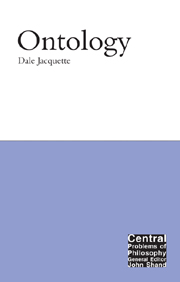Book contents
- Frontmatter
- Contents
- Preface
- Acknowledgements
- Introduction: Being as such
- I Pure philosophical ontology
- 1 What it is to be (on Heidegger)
- 2 Combinatorial ontology
- 3 Why there is something rather than nothing
- 4 Why there is only one logically contingent actual world
- 5 Concepts of existence in philosophical logic and the analysis of being qua being
- II Applied ontology and the metaphysics of science
- Conclusion: scientific–philosophical ontology
- Notes
- Bibliography
- Index
1 - What it is to be (on Heidegger)
from I - Pure philosophical ontology
- Frontmatter
- Contents
- Preface
- Acknowledgements
- Introduction: Being as such
- I Pure philosophical ontology
- 1 What it is to be (on Heidegger)
- 2 Combinatorial ontology
- 3 Why there is something rather than nothing
- 4 Why there is only one logically contingent actual world
- 5 Concepts of existence in philosophical logic and the analysis of being qua being
- II Applied ontology and the metaphysics of science
- Conclusion: scientific–philosophical ontology
- Notes
- Bibliography
- Index
Summary
The question of being
What is it for something to be? It is for that thing to have being, to exist, to be present, real, actual, manifest. If true at all, these equations are either trivial or viciously circular, and hence not much help in understanding the concept of being. They are trivially true if they merely pair together synonyms without explaining the concept of what it means to exist. They are circular if to be in the ontic or actual existence sense is not definable independently of whatever it means to actually “be” in the predication sense – to actually be red, for example, or non-red.
A circularity threatens if all that we can say about the meaning of any of these existence terms is to invoke a synonym. An even more bothersome circularity occurs if we try to say that to be is to be existent or to be present or the like. The only way to avoid circularity is to understand being in the predication sense as conceptually independent of being in the existence sense. If we are to avoid circularity in the concept of being, then we must begin by defining the concept of being in the predication sense and use it to explain the meaning of being in the existence sense.
- Type
- Chapter
- Information
- Ontology , pp. 12 - 41Publisher: Acumen PublishingPrint publication year: 2002



